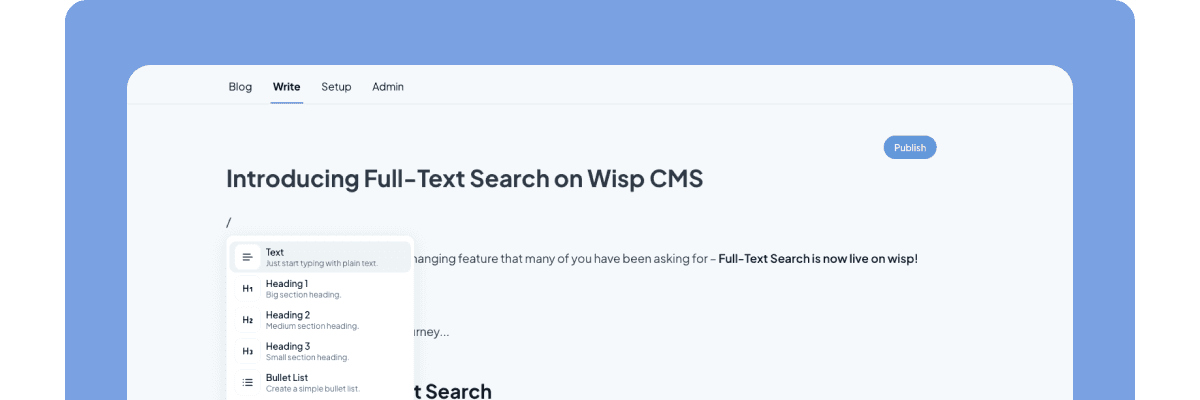 You've implemented a Large Language Model (LLM) application that seemed to work perfectly during testing. But now that it's live, you're seeing bizarre responses that make no sense, confidently stated falsehoods, and occasional inappropriate content slipping through your guardrails. As one frustrated developer put it: "The responses are insane. LLMs are out of control…"
You've implemented a Large Language Model (LLM) application that seemed to work perfectly during testing. But now that it's live, you're seeing bizarre responses that make no sense, confidently stated falsehoods, and occasional inappropriate content slipping through your guardrails. As one frustrated developer put it: "The responses are insane. LLMs are out of control…"
If this scenario sounds familiar, you're experiencing a common pain point in the world of AI implementation. The unpredictable nature of LLMs in production environments creates significant challenges for developers, data scientists, and organizations deploying these powerful tools.
What you're missing is proper LLM observability – a critical but often overlooked component of responsible AI deployment.
What is LLM Observability and Why Does It Matter?
LLM observability refers to the tools, methodologies, and frameworks that enable you to understand, monitor, and control the behavior of large language models in production. It goes beyond basic monitoring by providing comprehensive insights into inputs, outputs, and the internal states of your AI systems.
"Just trying to understand the term 'observability' here, in the context of LLMs. What is observed? Why is it observed?" asks one Reddit user, highlighting the common confusion around this concept.
Unlike traditional software monitoring, which focuses on metrics like uptime and resource usage, LLM observability addresses the unique challenges of language models:
Hallucinations: When models confidently generate factually incorrect information
Prompt hacking: Users manipulating prompts to bypass safety guardrails
Performance degradation: Slowdowns and increased latency over time
Data drift: Changes in real-world data that affect model performance
Cost optimization: Tracking token usage and API calls to manage expenses
Without proper observability, you're essentially flying blind with your AI implementation, unable to detect issues until they've already impacted users or your business.
The Difference Between Monitoring and Observability
While often used interchangeably, monitoring and observability serve distinct functions in the LLM ecosystem:
Monitoring involves tracking pre-defined metrics about your system's performance, like response time, token usage, or error rates.
Observability provides a deeper understanding of your system's behavior by allowing you to explore and analyze the "why" behind performance issues.
As Forbes notes in their article on AI-enhanced observability, "In a world dominated by hybrid and multi-cloud environments, observability provides a unified view for assessing and managing system performance." This unified view becomes even more crucial when dealing with the complexity of LLMs.
Key Components of an Effective LLM Observability Framework
To implement effective observability for your LLM applications, you need several key components:
1. Comprehensive Data Collection
"LLM observability tools provide an SDK to log LLM calls from your code or an LLM Proxy to intercept requests," explains one developer. This data collection should include:
Complete input prompts
Model responses
Metadata (timestamps, model version, parameters used)
User feedback and interactions
Environmental context
2. Storage Solutions
The volume of data generated by LLM applications requires scalable storage solutions:
Data warehouses like Snowflake
Object storage like Amazon S3
Time-series databases for tracking performance metrics over time
3. Analysis and Visualization Tools
Raw data isn't useful without proper analysis tools. Your observability stack should include:
Real-time dashboards for monitoring key metrics
Query interfaces for investigating specific incidents
Visualization tools to identify patterns and trends
Anomaly detection to flag unexpected behaviors
Popular LLM Observability Tools and Approaches
Several specialized tools have emerged to address the unique challenges of LLM observability:
1. Datadog LLM Observability
Datadog offers comprehensive monitoring capabilities with insights into input-output relationships, token usage, and latency. Their platform integrates with popular LLM frameworks and provides real-time analytics dashboards.
2. Langsmith & Portkey
These tools integrate directly into existing LLM workflows, making them relatively easy to implement. They provide tracing capabilities and performance metrics specifically designed for language models.
3. Helicone
An open-source solution that logs requests and responses for comprehensive tracking. Being open-source makes it particularly appealing for teams with specific customization needs.
4. Traceloop OpenLLMetry
A flexible option that integrates with multiple observability tools, allowing teams to leverage their existing infrastructure.
"So far I have only used one LLM observability and evaluation platform, Literal AI with the Python SDK. But there are many more," notes one practitioner, highlighting the growing ecosystem of specialized tools.
Implementing LLM Observability: A Mini-Guide
Let's break down the process of implementing an observability framework for your LLM applications:
Step 1: Define Your Observability Goals
Before selecting tools, clearly define what you need to observe:
Are you primarily concerned with detecting hallucinations?
Do you need to optimize costs related to token usage?
Are you monitoring for potential prompt injection attacks?
Do you need to track performance metrics like latency and throughput?
Step 2: Choose the Right Tools for Your Stack
Select observability tools based on your existing infrastructure and specific needs:
If you're using LangChain or LlamaIndex, tools with native integrations will be easier to implement
Consider your team's expertise and the learning curve associated with each tool
Evaluate the cost structure, especially as your usage scales
Step 3: Implement Logging and Data Collection
Integrate logging throughout your application:
# Example using a simple SDK-based approach
from llm_observability_tool import track_llm_call
def get_llm_response(prompt, user_id):
# Call the LLM
response = llm_client.generate(prompt)
# Log the interaction
track_llm_call(
prompt=prompt,
response=response.text,
user_id=user_id,
model="gpt-4",
latency=response.latency,
tokens_used=response.usage.total_tokens
)
return response.text
Alternatively, you can use a proxy-based approach that intercepts calls without modifying your application code:
# Example configuration for a proxy-based solution
export LLM_PROXY_URL=https://proxy.observability-tool.com
export OPENAI_API_BASE=$LLM_PROXY_URL
Step 4: Set Up Real-Time Monitoring and Alerts
Establish dashboards and alert systems to notify you of issues:
Set thresholds for key metrics (e.g., latency exceeding 2 seconds)
Create alerts for potential hallucinations or unsafe content
Monitor cost-related metrics to prevent unexpected expenditures
Step 5: Implement Continuous Evaluation
"It is hard to effectively eval it independent of live interactions," notes one developer, highlighting the importance of continuous evaluation:
Create benchmark datasets to test model performance over time
Implement automated evals that run periodically
Track performance against custom KPIs specific to your use case
Common Challenges and Solutions
Challenge: Market Readiness Concerns
"I do see the problem they solve, and I do understand it can be important for a company using LLM(s) to have an observability/monitoring platform. But I'm not sure the market is there yet," shares one skeptical observer.
Solution: Start with lightweight observability implementations that provide immediate value without significant overhead. As your LLM applications mature, you can gradually expand your observability infrastructure.
Challenge: Startup Resource Constraints
"I don't think observability tools are actually helpful at all for startups. At this stage startups are more geared towards actually making things rather than reinforcing existing solutions," argues one commenter.
Solution: Focus on the minimal viable observability that addresses your most critical risks. For startups, this might mean prioritizing tools that help prevent costly mistakes (like hallucinations in customer-facing applications) rather than comprehensive monitoring systems.
Challenge: Tool Complexity
"I feel it's too much of an overkill just for monitoring - I dislike how inflexible it is, but haven't used it in a few years now. I'm leaving it as a last choice," expresses one frustrated user.
Solution: Evaluate modern observability tools that offer modular approaches, allowing you to implement only what you need. Many newer tools are designed with developer experience in mind, reducing the complexity burden.
Conclusion
In a world where LLMs are increasingly powering critical applications, observability isn't just a nice-to-have – it's essential for responsible AI deployment. By implementing proper observability frameworks, you can gain control over unpredictable behaviors, optimize performance and costs, and build more reliable AI systems.
Remember that observability is an evolving practice. As one developer notes, "you can often improve resistance to data drift simply by making your overall system better." Observability tools should complement your core engineering practices, not replace them.
Whether you're dealing with customer support agents, content generation, or decision-making systems, the right observability approach will help you harness the power of LLMs while mitigating their inherent risks.



